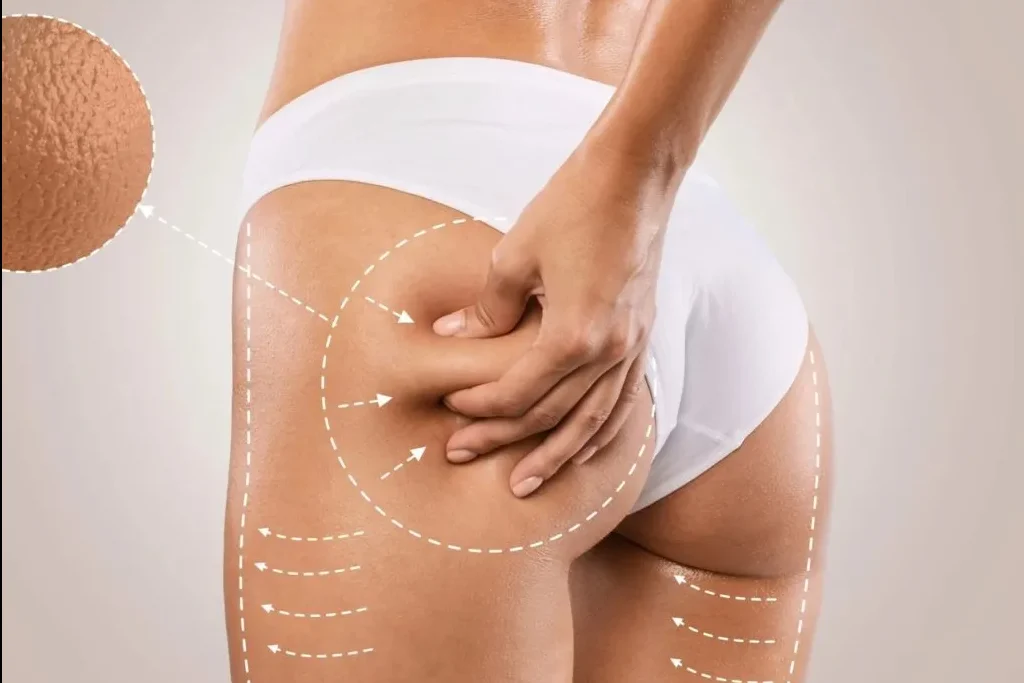
It uses your own fat—but not all of it survives
A Brazilian Butt Lift (BBL) starts with liposuction. Fat is taken from areas like the abdomen, flanks, or thighs. That fat is processed, purified, and injected into the buttocks to add volume. It’s natural in the sense that it’s your own tissue.
But not all of the transferred fat stays. Some of it is reabsorbed. Some dies off. On average, 60–80% survives long term. The rest fades within months. That’s why surgeons often overfill—knowing some volume will disappear.
The final shape doesn’t appear right away—it takes time, healing, and patience.
The result is full-body—not just one area
A BBL isn’t just about a bigger butt. It’s also about contouring the areas around it. Removing fat from the waist creates contrast. From the flanks, it sharpens the silhouette. The result is more curve—not just more size.
That’s what makes BBL different from implants. It’s redistribution. Not just enhancement. The waist gets smaller. The hips get rounder. The body shifts in proportion—not just projection.
It’s sculpting, not just filling.
It requires enough fat to begin with
Not everyone is a candidate. Leaner patients may not have enough fat for transfer. Or they may only have fat in areas that are hard to harvest safely.
In those cases, options are limited. Sometimes surgeons recommend gaining weight beforehand. Sometimes they suggest implants instead.
The quality, quantity, and location of fat all matter. More isn’t always better—but enough is essential.
The surgery is outpatient—but the recovery is intense
You go home the same day. But you don’t go back to normal. Sitting is restricted for weeks. You’ll need a special pillow—or avoid chairs altogether. Sleeping on your back isn’t allowed. Compression garments are worn 23 hours a day.
Bruising. Swelling. Numbness. These are part of the process. So is fatigue. So is discomfort. The first two weeks are the hardest. But the habits stay for months.
You don’t bounce back. You ease forward—slowly.
Fat can shift—or disappear
Even if fat survives, it can move. It’s living tissue. It responds to pressure. To movement. To weight change. Sit too early, and fat may die. Gain or lose weight later, and the result shifts.
That’s why post-op care matters. That’s why follow-up appointments matter. The surgery gives shape—but your behavior determines what stays.
BBL isn’t just about the operating room—it’s about everything after.
It carries higher risks than other cosmetic surgeries
BBL has a known complication: fat embolism. If fat enters a blood vessel and travels to the lungs or brain, it can be fatal. That’s why injection technique matters. Deep injections are more dangerous.
Skilled surgeons avoid muscle. They stay in the subcutaneous layer. They use cannulas designed to reduce risk.
Still, no surgery is without danger. And BBL carries more than most. The safety depends on the provider—and your willingness to follow aftercare instructions exactly.
Results can be stunning—but also unpredictable
Some patients get dramatic curves. Others, subtle balance. Some lose volume faster. Some heal unevenly. No two bodies respond the same.
Your skin, fat quality, and healing response shape your result. So does gravity. So does time.
That’s why expectations need to be flexible. The mirror may show change. But it may not match your imagination.
It’s permanent—but not untouchable
Surviving fat becomes part of your body. It grows if you gain weight. It shrinks if you lose. It responds to age, hormones, and lifestyle.
That’s why results change over time. It’s not frozen in place. It moves with you.
That’s a benefit for some—frustrating for others. Permanent doesn’t mean unchanging.
It’s popular—but not for everyone
BBL is one of the most-requested procedures worldwide. But that doesn’t make it right for everyone. Not every body needs it. Not every mind wants it.
Desire should come from self-awareness—not social media. The decision should be rooted in your reflection—not a trend.
The best BBLs don’t chase fashion. They chase balance.
